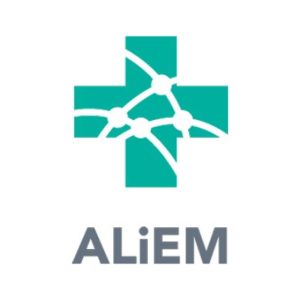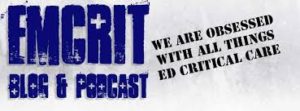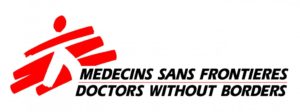Nursing FOAMed Review #1 (Aug 1st – 9th)
ALiEM brings us a great overview of maternal cardiac arrest. This article also comes with a link to ALiEM Cards on the same material. If you have never browsed the ALiEM Cards before – they are amazing and definitely worth your time. Articles such as this are always appreciated – any lesson on resuscitation that goes beyond the typical AHA ACLS course is worth a mention. Some really great takeaways here include:
- A great list of common causes of maternal cardiac arrest.
- How to anticipate potential magnesium and calcium based pharmacological treatment of arresting maternal patients.
- Recommendations of IO access above the diaphragm!
- Knowing to expect immediate C-section if ROSC is not within only 2 rounds of CPR.
- Intralipid use guidelines for patients with arrest after potential anesthetic toxicity.
A couple of very good FOAM sites have write ups on Morphine use in acute heart failure. Dr James Fletcher guest writes for R.E.B.E.L. EM on this post. The post references this article, a multicenter, observational, propensity matched cohort study, that compares mortality rates among two groups of acute heart failure patients – those that received Morphine and those that did not. There are some issues with the study, all of which are thoroughly discussed within the article written by Dr. Fletcher. There are also a few other studies mentioned that link Morphine with increased mortality in patients who present with acute heart failure.
One of the best takeaways from this review is this small segment: “The European Society of Cardiology guidelines on the treatment of heart failure recommend against the routine use of opiates, while the American Heart Association recommends opiate use in heart failure be limited to the palliative care of patients with end-stage HF and severe respiratory distress.” As a nurse, we sometimes find ourselves turning to Morphine for AHF patients, and sometimes not. This article can help us understand what our physicians are thinking.
emDocs did a similar article, but with a bit wider scope. Entitled Myths in Heart Failure: Part II – ED Management, this article is less of a single article review, and more of a case study about patients presenting to an emergency department with acute heart failure with concurrent hypertension. This emDocs article reiterates the lesson from R.E.B.E.L. EM about Morphine potentially increasing mortality for AHF patients, but there is also an incredibly thorough list of clinical pearls for AHF with hypertension such as: guidelines for diuresis, use of nitroglycerine, the aforementioned consideration of opioids, and a very cool bit on ultrafiltration for patients refractory to front line diuresis treatment. (This is the second part of a series from emDocs, the first in the series, an article called Myths in Heart Failure: Part I – ED Evaluation was published in late July and is definitely worth a look.)
A very prescient article concerning pain management from Annuls Of Emergency Medicine has sparked some chatter on emDOCS.net. Anyone who still works in an ED that is handing out Dilaudid like candy knows that we are contributing in our own way to the opioid epidemic. emDOCS.net shares a great article by Doctor Casey Wilson on nerve blocks on their use in emergency departments for the control of pain. (If you don’t have access to Annuls of Emergency Medicine there is a great podcast that gives you a quite thorough roundup here.) According to Dr. Wilson nerve blocks can be used for “fractures, joint reductions, complex laceration repairs, chest tube placements and paraphimosis” and have been shown to be even better than opioids for some older patients with femur fractures. Not that I wish any nurse to be flooded with paraphimosis cases – but the article is pretty cool in that it explains the simplicity of ultrasound guided nerve block procedures while providing readers with some great PDFs. Another really interesting point, especially for those wanting to increase throughput in the ED, references (small) study done in 2008 in the American Journal of Emergency Medicine which showed ultrasound guided nerve blocks for upper extremity injury actually reduced the average length of stay in the ED by 3 hours! A very cool share and worth a link to your Sono Fellowship director.
CoreEM brings us a great review on Acetaminophen overdose written by Dr. Magda Robak. This is a simple but effective teaching module for anyone who wants to review the most common single cause of acute liver failure in the US. The article reviews the Acetaminophen nomogram and also shares a simple but fantastic spreadsheet that I think can be very useful, especially for nursing triage and early nursing care:
Justin Morgenstern writes for First10EM and shares with us a case study on post tonsillectomy hemorrhage. This is one of those great FOAM articles that really packs a huge punch. First10EM takes a patient that seems simple enough – a potentially severe oropharyngeal bleed – and takes a quick, but incredibly thorough dive, into treatment considerations in the ED. There is a lot here for the ED nurse to unpack. Some highlights from this article include:
- Simple positioning of the patient makes a huge difference in management in the first minutes of patient care.
- This patient may need a blood transfusion! IV Tranexamic acid may be called for, but surprisingly DDAVP can also be empirically used, as undiagnosed Von Willebrand disease is apparently somewhat common in these patients.
- To use an NG tube or not to use an NG tube – a great discussion between two ED docs.
- Stop the bleeding is the name of the game – but what to do first? Try direct pressure with McGill’s forceps, or stick your fingers in the mouth and try to apply direct pressure with some gauze soaked in tranexamic acid and DDAVP? If none of those options work, or if they are not plausible, should we try to apply pressure to the carotid?
- Intubation considerations, and which drugs might need to be prepped for induction.
- Simple recommendations are sometimes the most amazing – while we are all running around focusing on stopping the bleed, make sure you don’t forget to recommend antiemetics! The patient has probably swallowed a lot of blood and an episode of violent emesis can destroy any clot that is beginning to form, so make sure to remember that the patient needs a hefty dose of antiemetics.
The Bottom Line writes a critical review of the PAMPer paper that was published in late July by NEJM. This trial aimed to find a difference in survivability between air transported trauma patients that received either fluid crystalloid boluses, or plasma. This Bottom Line post outlines the strengths and weaknesses of the PAMPer trial, as well as a short review of other similar trials, and why PAMPer is potentially so impactful. The paper showed a significant increase in survivability in the plasma group, as compared to severe trauma patients who received fluid crystalloids only. The study shows a 10% drop in mortality with an intervention of 600cc of thawed plasma. This mortality drop is so dramatic for such a slight intervention change, that there is a portion in The Bottom Line review that states the “biological plausibility” is questionable, which seems to be a nice way of saying that there are probably biases within the study that partially explain the survivability differences.
Either way, the PAMPer trial in NEJM, and The Bottom Line’s review of the article, are great reads for anyone who works air emergency treatment and/or Level 1 trauma medicine. We’ve known for some time that flooding patients suffering from hemorrhagic shock with NS increases our coagulopathy, acidosis (NS has a pH of approx. 5.5) and (unless the fluid is warmed) the likelihood of hypothermia. Treatment for traumatic hypovolemia that shoves the patient into the “trauma triad” should probably be avoided – so expect more trials like PAMPer and, hopefully, a change in paradigm in pre-hospital treatment for hemorrhagic shock patients.
Kristina Kipp writes for EMCrit to bring us a short review on an article that discusses the efficacy differences between Propanolol v Metoprolol in electrical storm arrests. This article from the Journal of American College of Cardiology is another piece of literature we can add to our arsenal of emerging information concerning electrical storm arrest patients. If you haven’t worked an electrical storm arrest resuscitation, this is a great article to get a glimpse at what may be different than a typical ACLS code. If you have worked an electrical storm resuscitation, read this article to see if your resuscitation team is following the newest recommendations in this emerging sub-class of VF or VT arrest. There is a great list of references at the end of the EMCrit article that is worth a review as well.
The first time I’d ever read about beta blockers during cardiac arrest was in CanadiEM almost a year ago. The infographics in the CanadiEM article are really fantastic and outline the basics of the pathophysiological logic that is applied to electrical storm arrests and why these particular resuscitations are so much different than our typical AHA ACLS boilerplate codes.
Not that this is typical FOAM sharing but – just wanted to link an incredible article from MSF on America’s attempt to ignore evidence-based practice and obliterate global women’s health access. The “Global Gag Rule” will link the funding of HIV treatment, tuberculosis programs, mother and child care, and other global health initiatives to regressive and morally bankrupt dogma. Read here to learn more about the view from the ground. https://www.doctorswithoutborders.org/new-global-gag-rule-more-dangerous-ever









